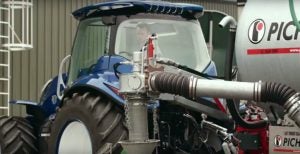A Japanese chemical manufacturing company has been working on creating liquid biomethane for cattle waste to use as rocket fuel.
According to the Kyodo News report, the company, Air Water Inc., says that it could begin trials as soon as this fall, using the rocket fuel on a rocket made by Interstellar Technologies Inc.
“We want to send the rocket up using carbon-neutral energy,” a representative from Air Water told Kyodo News.
The company says it hopes that using cow waste for fuel may serve as a potential solution for dairy farmers struggling with disposal challenges.
Air Water has been making liquid biomethane since 2021 in Hokkaido. Feces and urine from the bovines are fermented in a plant the company built on a dairy farm in Taiki before transporting the generated biogas to a factory in Obihiro.
Methane is separated, cooled, and then converted into liquid biomethane — the potential rocket fuel. Because rockets require liquid fuel to boost them into space, high-purity methane is typically manufactured using liquid natural gas.
Methane content in biogas from cow waste varies but typically varies between 50 to 70 percent methane.

Anaerobic digestion is already being used to power houses and natural gas vehicles
Producing power and fuels with cow manure has been in the works for many dairies and companies for years. This process is commonly referred to as anaerobic digestion, and it involves breaking down the organic matter in cow manure to produce biogas, which can be used as a biofuel.
The methane-rich biogas produced during anaerobic digestion is collected and stored in gas holders or tanks. Impurities such as carbon dioxide, hydrogen sulfide, and water vapor are removed to make the biogas suitable for use as a fuel.
Once the biogas is purified, it can be used directly as a fuel for heating, and electricity generation, or as a replacement for natural gas in various applications. It can also be further processed to produce liquid biofuels such as biomethane or bio-CNG (compressed natural gas), which can be used as a transportation fuel.
After anaerobic digestion, there is a solid residue left behind known as digestate. This material can be used as a nutrient-rich fertilizer for agriculture.
»Related: Montana man sentenced in $9 million cow manure Ponzi scheme


